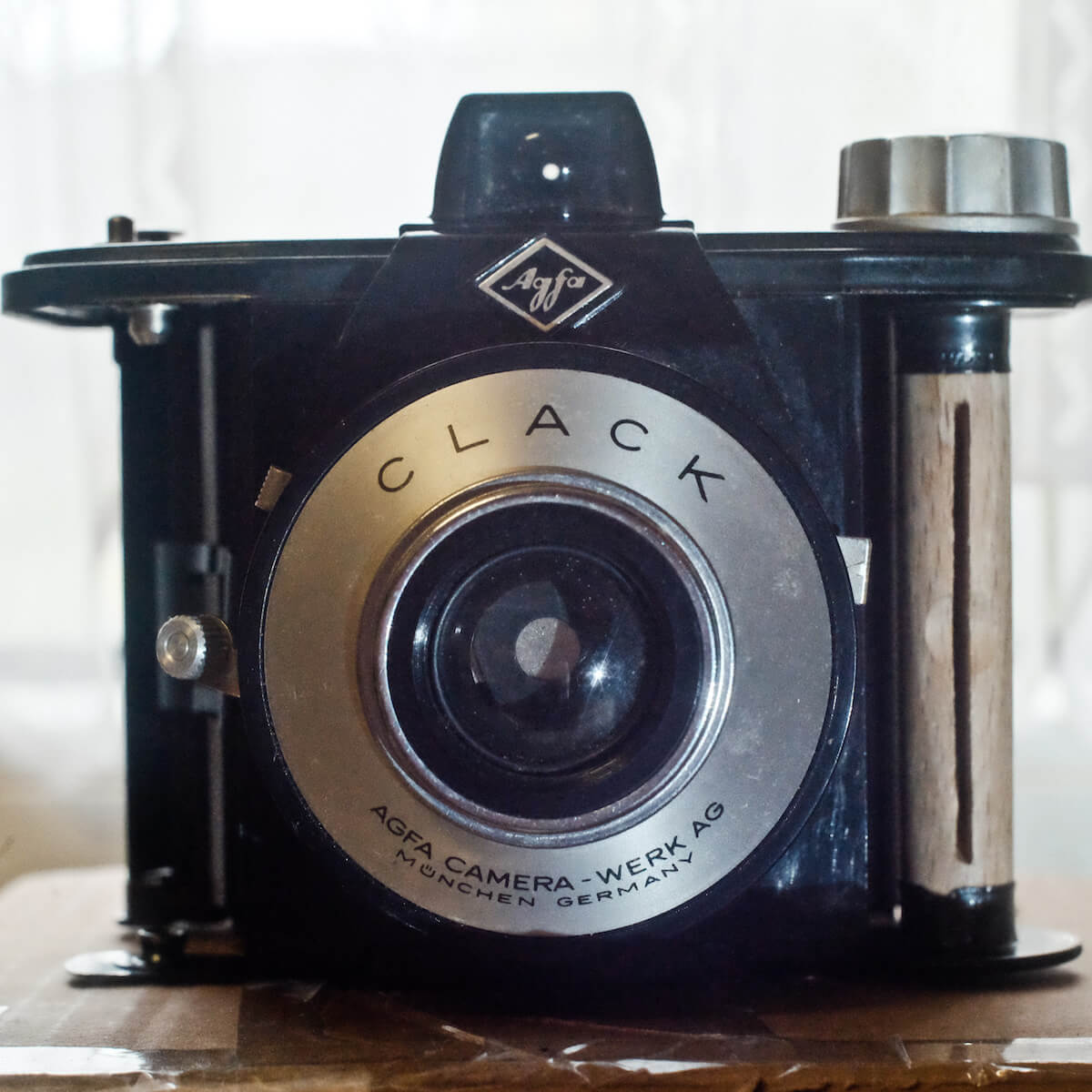I had hesitated for a long time, but at the beginning of April, the time had come. I was again in possession of the camera that was once my first. An Agfa Clack, 6×9. Back then, around 1975, my brother-in-law gave it to me. I had exposed maybe one film at that time, because my pocket money was quite small for the development. And my father hadn’t had the equipment to process medium format. But a beginning had been made.
Now it was in front of me again. I opened the back and what do I see? On the right side, a wooden spool. Oh dear, when was the last day this machine exposed a film? The shutter was also very sluggish at first. But after a few releases, it got going again. Well, let’s see what it can do.

This camera has a meniscus lens with a focal length of ?mm. It doesn’t matter, you can see through the viewfinder what’s going to be in the picture. There are two distance settings, 1–3m / 3–10ft and 3m–∞ / 10ft–∞. There are two aperture settings, cloudy and sunny. There is a shutter speed that is around 1/30 and B (bulb). Oh, and a cable release port. That’s all there is, that’s all you need. For the 1/30, I then choose a 100 ISO film, an ILFORD Delta 100 Professional.
It was the only 100-speed in the fridge besides an old ACROS. And the ACROS was a bit too pity for me. By the way, I never had any problems with films that went straight from the fridge to the camera. Sure, from the freezer I would give the film time to thaw first.
Now out into nature, it’s late afternoon and the sun is shining deep and pretty. Yes, the path I chose, I already walked countless times, but this time against the sun. The 8 shots I have then also made. And at least once I also used the close-up lens. I have read so much bad about it, let’s see.
When I came back, I had to develop the film immediately, of course. I am so impatient when I have something new. I developed the film in Adox FX39 II, 1+9. Also a developer I had to try out. And yes, the developer does its job very well. The developed film already looked very good. It could be a bit finer-grained, but that doesn’t matter at 6×9 anyway. And with the Clack regardless.
After dinner it is dry and then it goes into the scanner.
I would describe the exposures as good throughout. From the normal shots, I was not so convinced of the sharpness, it was ok. But the one with the close-up lens blew me away. It’s amazing how sharp and detailed it is. And, of course, the photo with the meteorite impact.
I assume that there was a large spread in the series for the lenses of this camera. And for me it was clear that I only want to use this camera at close range, 1-3m. Which is actually more fun for me anyway.
I think it’s great too, you don’t have to worry about the exposure. You only have the choice between sunny and cloudy. I had originally planned to convert it to a pinhole camera. But after the result in the close-up range I let that be. And, what I noticed later, the clip-on filters (30mm Ø) for the Agfa Isolette also fit on the Clack.
~ Olaf
Submit your 5 Frames… today
Get your own 5 Frames featured by submitting your article using this form or by sending an email via the contact link at the top of the page.
Share your knowledge, story or project
The transfer of knowledge across the film photography community is the heart of EMULSIVE. You can add your support by contributing your thoughts, work, experiences and ideas to inspire the hundreds of thousands of people who read these pages each month. Check out the submission guide here.
If you like what you’re reading you can also help this passion project by heading over to the EMULSIVE Patreon page and contributing as little as a dollar a month. There’s also print and apparel over at Society 6, currently showcasing over two dozen t-shirt designs and over a dozen unique photographs available for purchase.












